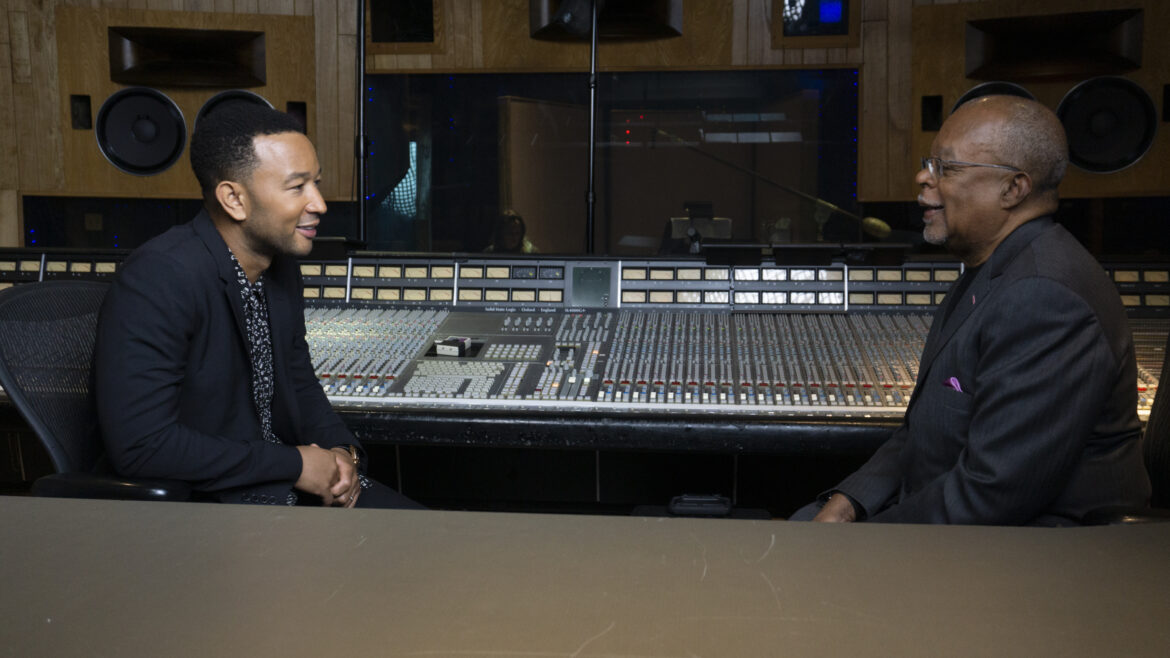Inaugural PBS diversity report highlights BIPOC contributions to programming

Courtesy of McGee Media
Host Henry Louis Gates Jr. speaks to recording artist John Legend in the 2021 docuseries "The Black Church: This Is Our Story, This Is Our Song."
PBS released its first annual report on diversity, equity and inclusion this month nearly a year after independent filmmakers called on public TV to improve DEI initiatives.
The report, which summarizes the network’s DEI work in fiscal year 2021, said PBS “offers more diverse content—and collaborates with more Black, Indigenous and People of Color (BIPOC) creators—than any other broadcast network.”
PBS said that 51% of its nationally programmed prime-time schedule “included diverse on-screen talent; was produced, written or directed by diverse makers; and/or explored diversity-related topics.” Further, among the 563 prime-time documentary programming hours in FY21, 56% of content “featured BIPOC talent, was produced by BIPOC makers or explored diversity-related topics.”
As examples, the report highlighted documentaries like Henry Louis Gates Jr.’s film The Black Church: This Is Our Story, This Is Our Song and American Masters’ Amy Tan: Unintended Memoir as examples of films that featured BIPOC people or were created in part by BIPOC filmmakers.
For the purpose of the report, PBS defined “diverse topics” as content that covers BIPOC people, LGBTQ people, and people with disabilities, said spokesperson Eleanor Hawkins in an email. PBS did not make the report’s authors available for an interview but answered questions in writing.
Released March 16, the report was “inter-departmental” and spearheaded by PBS’ office of diversity, equity and inclusion, according to Hawkins. The department is led by Cecilia Loving, who was hired as SVP of DEI in August. Loving works with Gina Leow, director of DEI, who joined PBS in November.
“This report reflects the progress we’ve made in FY 2021, and PBS has already continued to advance its goals to affect systemic change in FY 2022 by strengthening its DEI leadership, policies, practices, and programming through new hires, initiatives, partnerships, and plans to support our DEI goals,” Hawkins said.
“We view these as initial steps to support a continuous effort with the clear understanding that the goals of enhancing DEI, which includes accessibility, belonging, and welcoming for all, is a journey without end,” Hawkins added. “Reflecting the full range of the American experience is central to the mission of PBS, and we will continue to work closely with the National Multicultural Alliance, producing partners, and member stations to find opportunities to elevate DEI in every aspect of our work.”
PBS has pledged to release an annual DEI report “to enhance communication and transparency,” Hawkins said.
The report’s release follows criticism of the network by independent filmmakers who say public television lacks sufficient representation of BIPOC people in content and leadership. Grace Lee, a director and producer who has worked with PBS, called attention to the issue in an essay in 2020 and later helped organize Beyond Inclusion, a group of filmmakers who wrote an open letter last year challenging PBS to release data on filmmakers who have worked with the network. Lee has also hosted a podcast, Viewers Like Us, examining public television’s shortcomings in racial diversity.
After the public criticism, PBS announced diversity initiatives that included hiring a DEI leader, new funding for organizations led by filmmakers of color, and requiring producers who work with PBS to submit diversity reports. PBS President Paula Kerger and Programming Chief Sylvia Bugg have also convened listening tours with filmmakers and station leaders on DEI practices.
Lee was unavailable to comment on the new DEI report. Others who signed the Beyond Inclusion open letter did not respond to requests for comment.
The new report showed that prime-time documentary productions led by BIPOC makers increased to 35% in FY21, up from 18% in FY20. The previous peak was 23% in FY18.
In the past year, PBS has also held two open calls for multiplatform content made by producers from diverse backgrounds. The report said the process yielded content for a new short fiction and nonfiction film anthology series, The Latino Experience, among other programs.
Content created by PBS Digital Studios, which includes YouTube programs like the music show Sound Field and the new series Subcultured, is more diverse than prime-time programming, according to the report. PBS Digital Studios released 30 series in FY21, 86% of which featured diverse stories and talent or covered a diversity-related topic. Streaming of PBSDS content grew by 10% during the period, averaging 62 million streams per month.
All PBS Kids series feature characters of diverse backgrounds, according to the report. In FY21, 20 out of the 29 PBS Kids nationally distributed series featured predominantly human characters, and every one of these series featured characters of diverse ethnic or racial backgrounds.
Out of 496 employees at PBS in FY21, 60% were white. Eighteen percent of staffers were Black, 11% were Asian and 9% were Hispanic or Latino. Native Hawaiian and other Pacific Islanders accounted for less than 1% of staffers, and there were no recorded American Indian or Alaska Native staff.
Overall, 75% of PBS’ executive staffers are white and 25% are Black. PBS recorded no percentages of other races among executive staffers. The ranks of first- and mid-level managers, however, were more diverse, with Asian, Black and Hispanic employees each making up roughly 10% of staff in each category.






